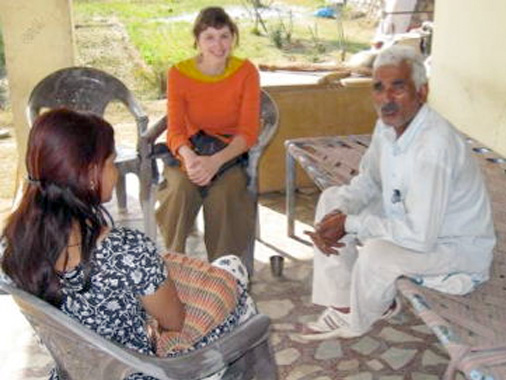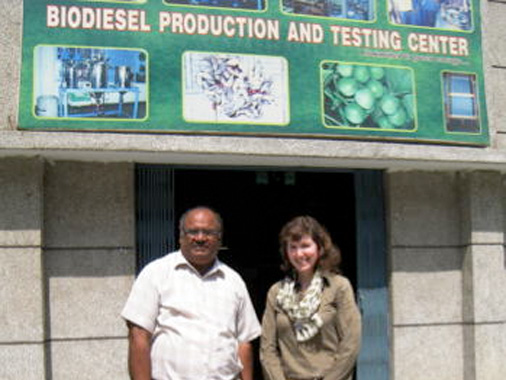Could you let us know about your research topic?
Arguments putting forward alternative fuels claim that they are potentially an important tool to curb Greenhouse Gases (GHG) emissions and to enhance energy security of supply. Yet, the question of whether alternative fuels are truly a sustainable substitute to conventional fuels is controversial. How green are green fuels? Under which conditions can alternative fuel chains be competitive with conventional fuels? Which local factors constrain at most its sustainability? How do methodological assumptions compromise the transparency of overall results? In this tangle context, my doctoral program aims at clarifying these questions and analysing the environmental impacts of alternative fuels, vis-a-vis conventional fuels life-cycle. I developed a model that provides an up-to-date environmental evaluation of alternative fuel production and utilization systems (full fuel-cycle analysis base) and forecasts up to 2030 different scenarios of production pathways, considering both first and second generations conversion routes under different local conditions. The model also adopts different methodological approaches and background assumptions, in order to understand how these factors can mislead overall assessment. Two case studies were evaluated, Brazilian sugar cane ethanol and Indian jatropha biodiesel.
Where and when did you conduct overseas survey?
I conducted two overseas surveys for my doctoral program. In 2009, I went to Southern and Central Brazil and visited sugar cane cropland farms and ethanol refining units. My schedule was in Sao Paulo State, where more than 80% of total sugar cane cropland in Brazil is harvested, as well as in Brasilia, capital city of Brazil. I also visited influential stakeholders involved in the Brazilian sugar cane ethanol market and automotive industry, namely policy-makers, research institutes, sugar cane farmers’ unions, and the private sector. Thereafter, in 2010, I was in Southwest and Central India and visited pilot projects of jatropha shrubs plantations, biodiesel extraction and transesterification units. Given that jatropha biodiesel programs are still under development and did not reach a commercial scale, I could only visit pilot projects, being currently supervised by the Government of India, NGO’s, and civil societies. I visited the following areas: Rajasthan, Maharastra, Andhra Pradesh, Tamil Nadu, and Kerala States.
Please explain the purpose of the overseas survey.
Life cycle assessment is a global environmental management tool. Yet, its reliability and accuracy of results strongly depends on quality of local data sources. Both overseas surveys aimed at collecting background and foreground data with regard to the entire life-cycle of sugar cane ethanol and jatropha biodiesel. I conducted the inventory assessment of the cropland farming, and industrial processing phases, as well as distribution and collection stages. In addition, I accomplished the inventory of light passenger and duty vehicle fleets, acquiring statistical data on fleets’ typology and mobility activity partners in Brazil and India. I also qualitatively analysed future trends of bioenergy production policies to design future scenarios of alternative fuel production pathways.
What did you do and let us know how it was.
Overseas surveys conducted in Brazil and India had the objective of collect secondary data to accomplish the energy and mass balances of alternative fuel full life-cycles. Beforehand the field survey, I carried out a comprehensive literature review in order to understand knowledge gaps and to identify the data to be collected in my inventory assessment. While in the field, I visited governmental institutions, research centres, sugar cane and jatropha farmers, as well as, alternative and conventional fuel refineries. I collected statistic historical data series, namely on farming practices (e.g.: crop productivity, agro-chemical application, irrigation, machinery fuel consumption), efficiency of refining processes, reagents consumption, etc. Additionally, I review current energy policies of Brazil and India and identified possible future technological scenarios to enhance bioenergy pathways.


